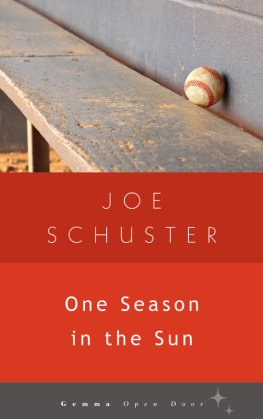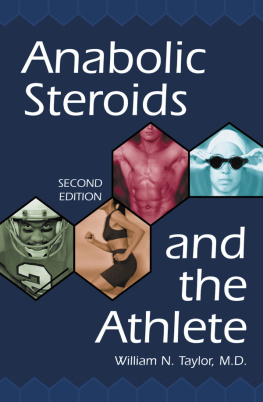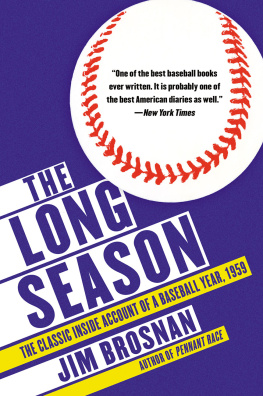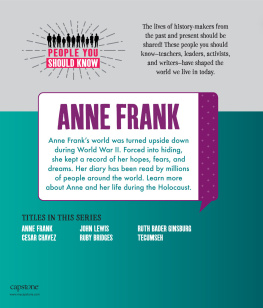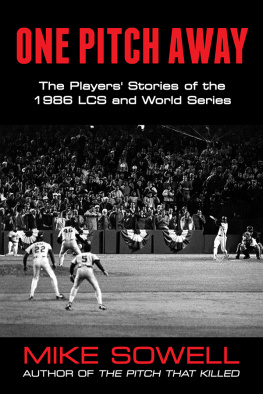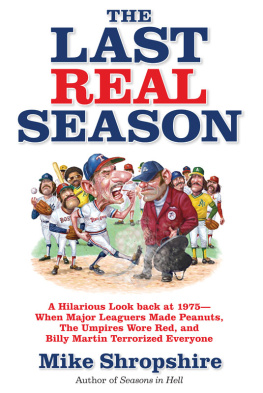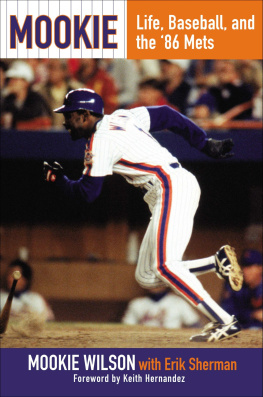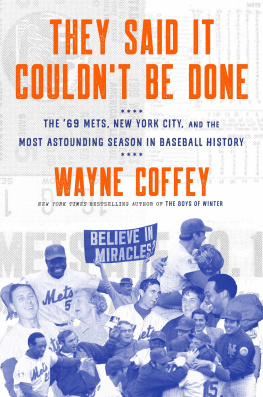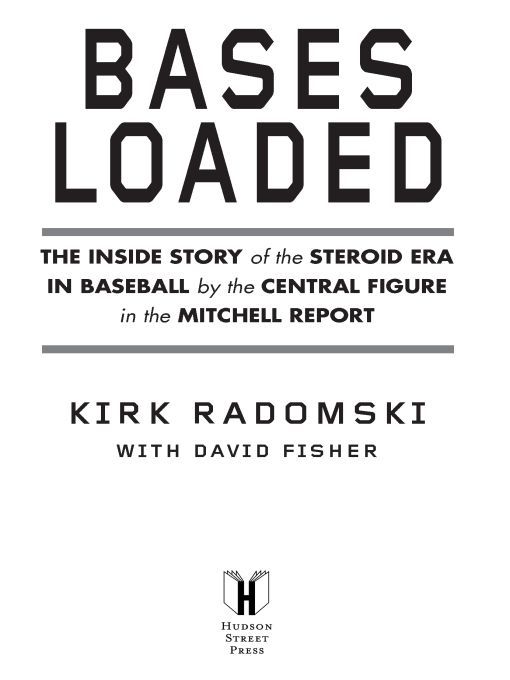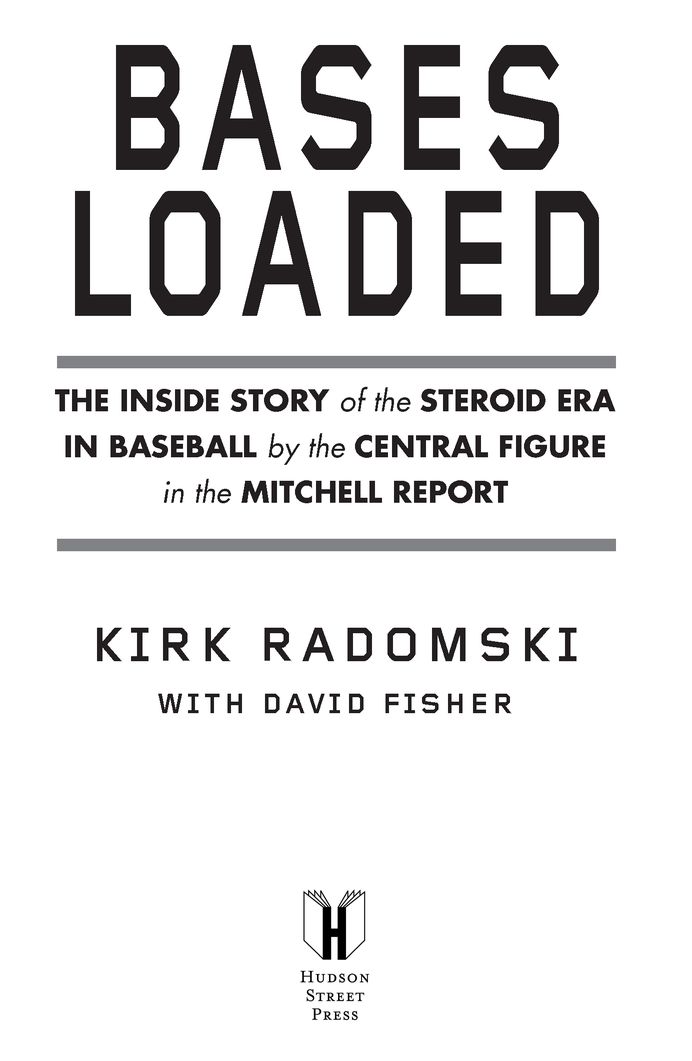Table of Contents
What you are about to read has been an extraordinarily diffficult
experience ffor me. There is no possible way I could have survived
it without the love and support and understanding off my wiffe. I
always tell her that she hit the Lotto on the day she met me, but we
both know the truth. And I also want to dedicate this book to my
daughter, because everything that her mother and I do is ffor her.
ACKNOWLEDGMENTS
There are so many people whose friendship and support I would like to acknowledge. Among them are those friends Ive had for so many years, the people I have depended on, knowing they have my back. These include Steve Cohen, Tommy DePasquale, Anthony Romano, Anthony Marino, Joey Rivera, and my oldest friend Ralph Cosenzo. My friend and my business partner, Vinny Greco, lived through this with me day by day and suffered the media with a smile and only occasionally a nasty word. David Segui is the only ballplayer with the courage to stand up for the truth and I truly thank him for that. I also would like to acknowledge the friendship of Anthony from Docs Nutrition in Mamaroneck, New York, and my attorney John Reilly and his wonderful secretary, Kathy. The one person who could truly appreciate my situation and remained a close and trusted friend is Brian McNamee, an honest man Im proud to call my friend. I live on a lovely block in a great neighborhood surrounded by really good people, many of whom were greatly inconvenienced by my actions but never complained and were always supportive. I want them to know that I greatly appreciate them. Of course I want to thank the entire Radomski and Gaskill families, especially my loving godmother, my aunt Carol. Oddly enough, I also want IRS agent Jeff Novitzky and his entire team to know how much I appreciated their professional attitude at all times; without any exception they were always fair and honest with me.
Its also my pleasure to express my great appreciation to the editor in chief of Hudson Street Press, Luke Dempsey, and the editor I worked with so closely, Meghan Stevenson, for helping me tell this story.
My collaborator, David Fisher, would like to acknowledge the incredibly loving support of his wife, Laura Stevens, and their sons, Jesse and Beau. And also the unbelievably hardworking and extremely competent crewparticularly Suzanneat the Karmen Executive Center in Seattle, Washington.
ONE
It was June 1994, at Shea Stadium in Queens, New York, and the annual media versus front office game was about to begin. Not that I knew anything about it. I was fast asleep in the Mets locker room, having worked very late the night before, cleaning up the clubhouse after a ball game. And even if I had been awake, I wouldnt have cared. I didnt play baseball and hadnt swung a baseball bat in nearly a decade.
But the Mets beat writers and the front office staff looked forward to this game, so when the media team needed a catcher, Bob Klapisch of the New York Post woke me up to ask me to play. Come on, Bob, I told him, Im exhausted. I have to work tonight. But he was persistent. Reluctantly, I agreed. I threw some water on my face, put on my cleats, and went out to the field.
The fact that we were playing at Shea was about all that was professional about the game. I had been working for the Mets for nine years, so I knew just about everybody on the field, but this was the first time Id played in this game. I came up to bat in the second inning, pulled a Dwight Gooden-model bat out of the bat rack, and took a couple of practice swings. It felt good. Then I walked toward the plate. I knew it was a meaningless game, but Im a very competitive person. Whatever I do, I push myself to do it as well as possible. I dont like failing at anything.
The pitcher was Drew Marino, a Mets computer analyst and batting-practice pitcher. Drew didnt exactly throw a Doc Gooden fastball. I stepped into the batters box. Drew went into his windup. I wasnt trying to do anything fancy, just to hit the ball where it was pitched. It was a fastball, about belt high. I swung easily and almost didnt feel the ball hitting the bat.
It just jumped off my bat. In the language of baseball, a home run is called a long fly. This was a very long fly: a shot to left field that went sailing into the visitors bullpen. It was about twenty-five feet over the wall. I dont know who was more surprised, me or the other players. But I jogged easily around the bases as if this was something I did every day.
Im a pretty good athlete but this was completely unexpected. My teammates were thrilled, high-fiving me when I got back to the dugout.
The next time I got up I tried not to get too excited. Once again I swung at a first-pitch fastball. And again the baseball just took off, slamming into the center-field wall almost four hundred feet away. I jogged easily into second base. I forget who was playing shortstop, but he was smiling as he came over to me. Jesus, Murdoch, he said, calling me by my clubhouse nickname, how come youre not playing ball somewhere?
I told him the truth. Ice hockeys my sport, I said. Baseball isnt violent enough for me.
I had an unbelievable game: four hits in five or six at bats. In the locker room after the game, everybody was talking about those two long drives. Generally, there arent any home runs hit in these games. Just reaching the fence once is a big deal. Somebody asked me, Hey, Murdoch, whered all that power come from?
I shrugged my shoulders as if I didnt know. But I knew. Believe me, I knew.
On April 26, 2007, I signed a plea agreement with the U.S. attorney in San Francisco, pleading guilty to one count of distribution of anabolic steroids and one count of money laundering. I definitely was guilty of those two crimesand a lot more. For more than a decade, Id been a primary source of illegal steroids and human growth hormones for hundreds of major-league baseball players. My attorney had warned me that I was facing as many as twenty-five years in prison. I had no options; I had admitted being the central figure in what would be called the biggest scandal to hit professional sports since the Chicago Black Sox had fixed the 1919 World Series.
I was known throughout baseball as Murdoch, named after hockey star Don Murdoch; I was the guy who could get a player what he needed to excel in the big leagues or to keep him in the game for one more contract, one more season. I was the go-to guy players came to for advice on conditioning and nutritionand illegal steroids and human growth hormones. I didnt help these players earn millions of dollars; I helped them earn hundreds of millions of dollars. In fact in 2001 I made up a twenty-five-man roster of players I was dealing with and added up their salaries. The total was staggering. My team, the Kirk Radomski team, was earning more than $300 million in salary that season. That was at least $100 million more than the entire Yankees payroll.
Ive been called a drug pusher, but Ive never thought of myselfor my actionsthat way. Many people blame me personally for destroying the integrity of the game. They believe that juice, as steroids and human growth hormones were commonly known, turned ordinary players into the superstars who broke baseballs most important records. That isnt true. Simply stated, steroids and human growth hormones are not miracle drugs capable of transforming talented athletes into legends.


